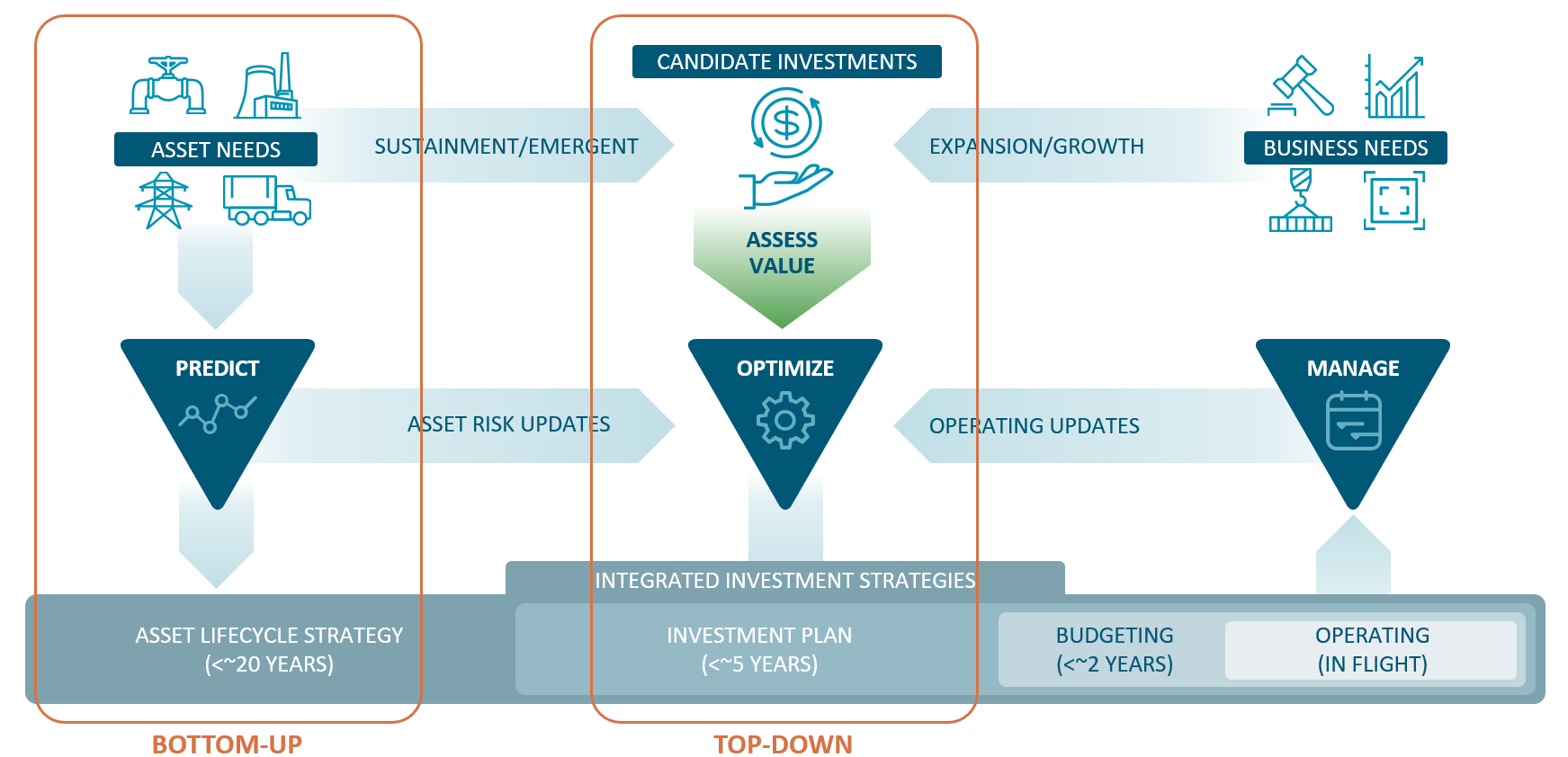Asset Investment Planning & Management: A Best Practice of ISO 55000
Asset Investment Planning & Management (AIPM) is a best practice in asset management that embodies the key principles of ISO 55000 and empowers businesses to make the highest-value investment decisions. AIPM solutions are specifically designed to address the challenge of planning and decision making in organizations that manage critical infrastructure. Such solutions are based on a few key principles:
- Value: use a value framework to rigorously quantify the overall benefits of each project
- Options: for every important project, alternatives should be considered and valued to ensure due diligence and to give the AIPM system more planning flexibility when not enough resources are available to fund all projects under consideration
- Time: every element of a project justification changes with time. Costs, benefits, resource availability, etc., all change if a project is deferred or advanced. Project justifications should therefore be time dynamic, so that the business case automatically adjusts in case of time shifts.
- Asset-informed: many projects are related to the replacement or refurbishment of existing assets, and their justifications are largely driven by avoiding the risk of asset failures. If such a project were deferred, the risk of the asset failing will increase and might become unacceptable, therefore changing the justification of the project.
- Scenarios: the future is uncertain, and it is therefore prudent to explore multiple “what-if” scenarios. A scenario analysis will identify which projects should go ahead irrespective of what the future holds, and which projects are marginal.
- Optimization: in order to solve the multi-criteria decision analysis problem described above, AIPM solutions use optimization algorithms similar to those used in operations research and in financial markets. These algorithms can quickly analyze large portfolios with many projects, each with its alternatives and asset dependencies. This allows organizations to explore multiple scenarios within minutes, whereas such work might take weeks when done manually.
A typical AIPM solution is shown in the diagram below:

The left column represents the “bottom-up” analysis done by technical staff: based on asset information (e.g. age, condition, efficiency), models can be used to predict future failure risks and investment needs. This allows staff to develop long-term lifecycle strategies for different asset types.
The middle column highlights the “top-down” process generally followed by management to determine which projects should be approved: project business cases are developed based on sustainment needs from existing assets, and other investment needs (e.g. growth, technology changes, regulatory requirements). These business cases are all assessed using the value framework described above, and put into competition for money and resources within portfolios. An optimization engine is used to determine which projects to do when, which translates into a multi-year investment plan.
Once the investment plan is approved by top management, the bottom right corner of the diagram shows the execution of projects—taking into consideration possible changes that occur during execution, such as weather, supplier delays, etc. The three areas of the diagram are interconnected: a delay in the execution of a project might affect the ability to start new work, a change in degradation of an asset might accelerate the need for the asset to be replaced, etc. A good AIPM solution will therefore connect the three areas of decision making so that changes in one area automatically adjust recommended decisions in the other areas.
This is especially important in uncertain times such as the pandemic: management might be forced to reduce budgets, and some staff might not be able to perform routine maintenance or new project work. AIPM systems allow organizations to rapidly adapt by trying different scenarios and developing revised plans under changing circumstances, so that plans remain optimal despite many changes and challenges.
AIPM systems have proven to be highly effective at asset-intensive organizations. By using portfolio optimization rather than simple prioritization ranking, organizations report up to 20% higher value for the same amount of money spent, 50% reduction in planning time, and 10% improvement in the execution of approved projects.
Conclusion
Asset management is now recognized as an essential management system for organizations managing critical infrastructure. This has led to the development and growing adoption of the ISO 55000 series of management system standards, which highlight the importance of the concepts of risk-informed and value-based decision making. AIPM is one of the key processes in asset management, enabling organizations to leverage risk and value to make optimal and rigorous investment decisions with agility and high efficiency.
Download our white paper to learn more about how Copperleaf’s Decision Analytics Solutions support the requirements of ISO 55001.

